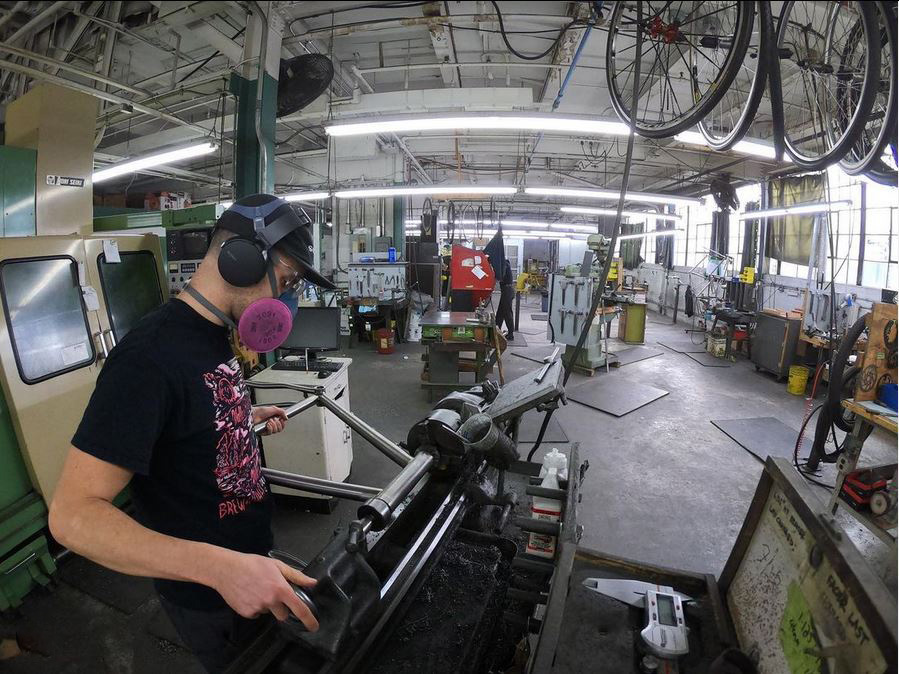Final machining completes the frame, making it ready to assemble into a fully functioning bike. The head tube, ever so slightly distorted from the heat of the welding torch, is faced and reamed on a vintage, Massachusetts-made lathe.
The bottom bracket, still just a thick walled tube at this point, is threaded and machined in the CNC, the largest machine in the building. Seat tube notches get cut, and carbon fiber tubes are fitted into the frame if we are building a titanium/carbon model.
Your frame has been through a lot at this point. The raw tubes pulled from the rack in machining have been cut, filed, sanded, tacked, aligned, welded, reamed, faced, and threaded. When the builder puts your frame in the finishing stand, it could, technically, be assembled into a bike, but it wouldn’t be as pretty as it will be when we’re done with it.
There are cutting fluids dried on it. Around each weld is a hazy discoloration from the heat. Metal bits left over from its final moments in the CNC machine are stuck inside the seat tube.
If machining feels walled in, and welding is like a lab, the finishing department has the feel of an open-air quad. Big windows fill the room with natural light. The fluorescent lights are at their brightest here, which is useful for decal alignment and detailed inspection.
Instead of immobile machines, or wide metal desks, there are single tier bike stands equipped with small lightweight tools, drills with Nylox wheels, and thin strips of sandpaper and Scotch-Brite. The scratchy wheels of Nylox power through the unsightly discolorations and remove any other surface grit. The sound of the wheel on titanium is a constant.
When the entire frame has been wheeled, it gets polished with Scotch-Brite, the way you would shine a valued pair of leather shoes. This final touch imparts a bright, uniform look. Decals are applied, and small parts are secured. The entire frame is coated in a light furniture polish, and then a laser cut, stainless steel head badge gets bolted on.
If the frame is being painted, the finisher stops short of decaling and affixing those small parts.
This is part three of a four-part series on the Seven framebuilding process. Be sure to check out parts one, two, and four to learn the whole story.

